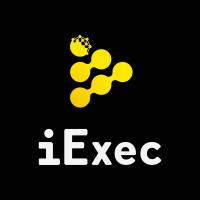Descrption:NULS is a highly customizable modular blockchain infrastructure. It consists of a microkernel and functional modules. NULS provides smart contract, multi-chain mechanism and cross-chain consensus. It aims to break the technical barriers of blockchain, to reduce the cost of development, and to promote the usage of blockchain technology in the commercial field.
NULS-Proof of Credit(POC) protocol
v1
Principle and design goals
After conducting market research and analysis, we found that there are various problems that hinder the growth and development of blockchain. Talented individuals in the IT sector are already hard to come by and developers who are then also experienced in blockchain is a rarity. This creates a higher cost for development as these individuals can charge a premium in exchange for their services due to the simple economic function of demand exceeding supply. This issue cannot be solved in the short term and will only be solved over time as more developers learn and understand the technology.
Existing Blockchains are limited in performance and cross-chain communication is still being explored. Organizations and businesses will not be interested in using a consortium or private chain that isn’t completely trustworthy. NULS will provide a reliable solution to these problems.
Technology implementation
Consensus mechanism
A. Consensus Mechanism - Proof of Credit (POC)
The modular architectural design of NULS supports the insertion of new functional modules as well as the replacement of the core functional modules in the consensus mechanism. The user can set the rules for their sub-chain and customize them to their needs.
The main-chain will use the Proof of Credit (POC) protocol that is the first of its kind designed by the NULS team. It works like Proof of Stake where a certain number of tokens will need to be locked before the user can run a node on the network. This exact amount has yet to be decided and the community will vote on it. When a user wants to stop running a node, they can immediately unlock their tokens.
Accounts and transactions
NULS understands the importance of performance and the limitations of current Blockchains and is committed to solving these for widespread adoption. Using parallel expansion technology through the multi-chain system, millions of transactions per second can be processed through the main-chain and sub-chains.
Smart contract system
NULS Smart Contract
NULS has a built-in smart contract virtual machine (NULSVM) that is structurally between the external service module (e.g. RPC module) and the underlying infrastructure module (e.g. network module, storage module or account module). The smart contracts are used by the higher-level applications, interpreted by the interpreter, stored by the storage module and computed by the NULSVM module. It also supports various higher-level programming languages to cater towards the developer that wants to develop in their desired language and compiles the program through the interpreter so that the VM can understand and read the application.
Cryptography
The decentralized nature of NULS is in creating a business model that bridges the gap of trust in using the technology as well allow users to customize their chain to fit with their needs. The simplicity of implementation comes from the architectural design of NULS where complex concepts such as cryptography, consensus mechanisms and storage methods are abstracted away from the developer and they need only to be concerned with what they want to build that is within their skillset.
Distributed storage protocol
Cross-chain and exchange technology
Cross-chain Consensus Domain (C3D)
Partial nodes of the main-chain and the sub-chain make up the cross-chain consensus domain (C3D). The nodes agree on cross-chain transactions between each other and share the data with other nodes in their own chain.

Main-chain consensus domain (surrounded by nodes of main-chain) Sub-chain A consensus domain (surrounded by nodes of chain A) Sub-chain B consensus domain (surrounded by nodes of chain B) overlapped /connected area: Cross-chain consensus domain A, cross-chain consensus domain B
Cross-chain Consensus Node (C3N)
Nodes that join cross-chain consensus need to load modules that are operable across both chains such as the cross-chain network module and the cross-chain protocol processor module.

Special technology
Economic model and incentive
The token of NULS will be used to promote the entire ecosystem. It will be used to support NULS based applications, pay for application costs, perform exchange for sub-chain digital assets, support NULS development, reward miners and pay transaction fees.
A. The issuance of NULS is divided into 4 parts:
a. Airdrop
40% of the tokens will be airdropped (40 million) to owners of the ERC20 placeholder token.
b. Development Funding
20% of the total tokens (20 million) will go towards continued development. Once the main net is live, these tokens will be unlocked at the rate of 5% (1 million) per month over the course of 20 months.
c. Community Funding
20% of the tokens (20 million) will be allocated for building the community, and no more than 4 million tokens will ever be used per year.
d. Business Cooperation
20% of the tokens (20 million) will be used for business partnerships and to support high quality NULS based third party projects. No more than 4 million tokens will ever be used per year.

B. Network Maintenance
Consensus Reward
To ensure balance and fairness of the entire NULS system, the consensus reward is computed based on the amount of staked coins and the node credit submitted by all consensus nodes.
Governance mechanism
Applications
Adaptable to numerous application scenarios
The application layer is where the developer can take advantage of the infrastructural support that has been designed as a part of the platform. The developer can easily perform basic tasks and make use of the modular parts such as the multi-chain system and smart contracts.
Contributors
No contributors information for the version. to see perfessional version!
Comment
| Rank | Blochchain | Similarity |
|---|---|---|
|
1st
|
BHPC
|
25.356954814814802% |
|
2st
|
ELF
|
24.8425222222222% |
|
3st
|
ZIL
|
23.2792451851852% |
|
4st
|
STORJ
|
23.2790066666667% |
|
5st
|
DRGN
|
23.27763% |
No analysis results for the version. to see perfessional version!
| Rank | Blochchain | Similarity |
|---|---|---|
|
1st
|
OMG
|
9.5486% |
|
2st
|
VET
|
9.1526% |
|
3st
|
WAVES
|
8.892% |
|
4st
|
TKY
|
7.4965% |
|
5st
|
RLC
|
6.6366% |
Name:
Company:
Email:
Location:
Repos:
Followers:











